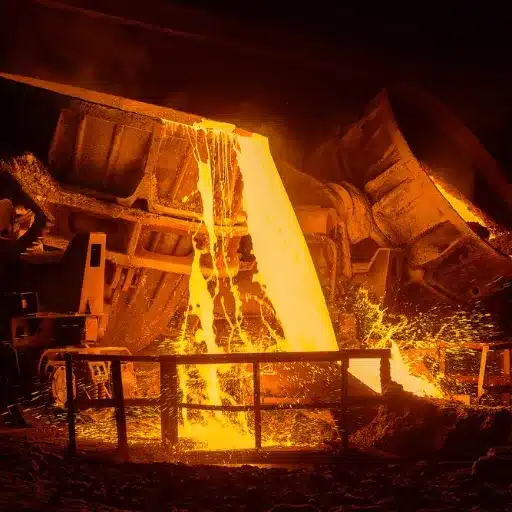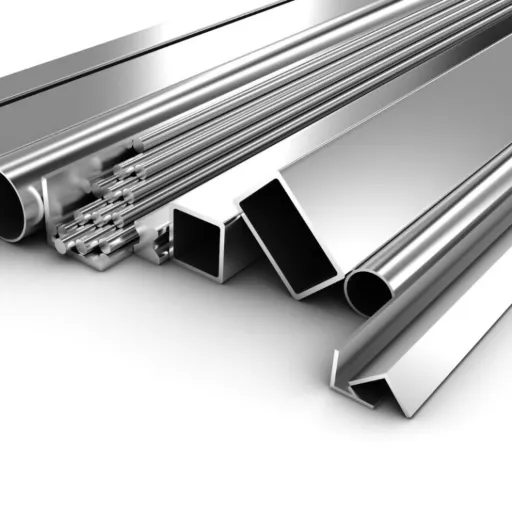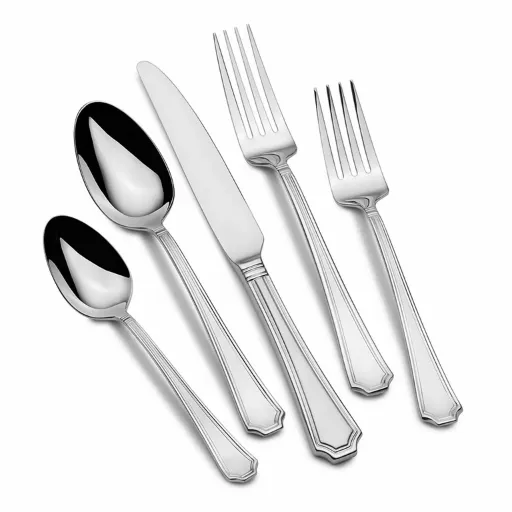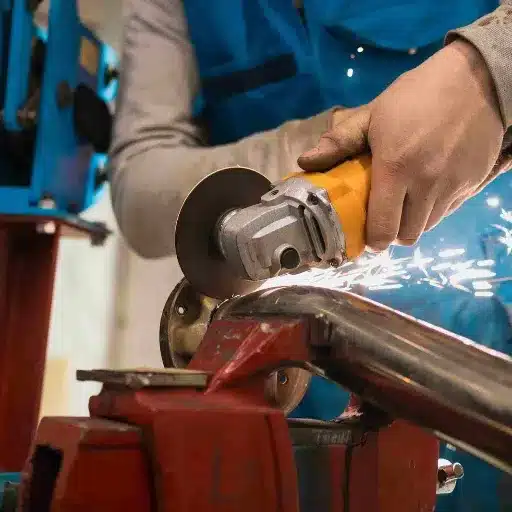Stainless steel 304 is one of the few industrial materials that is versatile and dependable at the same time. It is a metal that very few applications can do without due to its superb durability, resistance to rust and attractive looks. At the same time, however, the question arises: what is the science behind its resilience, especially the aspect of being able to resist really high temperatures? To know the melting point of stainless steel 304 is to know its remarkable performance in the case of demanding application. This article is henceforth about the factors that make this material so special, the factors that influence its melting point, and the importance of this property for the industries from construction to manufacturing. So keep reading and unravel the technical aspects as well as the real-life significance of the melting point of stainless steel 304!
Stainless Steel and Melting Points Introduction
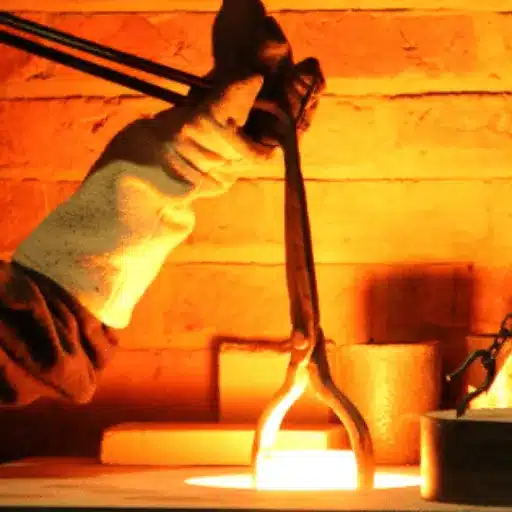
Melting Points Significance in Industrial Applications
The melting point of stainless steel 304, around 1400–1450°C (2552–2642°F), is a determinant factor for its use in a certain range of industrial applications. The stainless steel 304 is chosen and used for a variety of applications in the construction, automotive, and aerospace industries where extreme heat is involved as the melting points of 304 and other similar materials are very high. For example, the strength and resistance to deformation at high temperatures make it very suitable for the use in parts of buildings, heat treatment, and manufacturing of easier tools.
High melting points, in addition, support the use of stainless steel 304 in welding and forging among other processes. The material’s property of not being affected by the thermal stress ensures that such products are indeed very durable and reliable even when subjected to frequent temperature changes. This is not just simply a good factor in the energy production industry where blades and pipelines are usually exposed to thermal cycling, but in all industries that rely on energy, as they shall not suffer from overheating of the material which would require the installation of new systems.
Alloy Overview of Stainless Steel
Stainless steel alloys are very diverse materials that are chosen for their remarkable strength, longevity, and corrosion resistance. The corrosion resistance of these alloys that consist of iron and at least 10.5% chromium is due to the formation of a robust and protective chromium oxide layer over the surface through the reaction of chromium with the atmosphere. Depending on the use of the alloy, other elements can be added like nickel, molybdenum, manganese, and nitrogen to obtain certain properties such as strength, hardness, or resistance to extreme conditions.
The most common grades include stainless steel 304 which contains around 18% chromium and 8% nickel. This amount of chromium and nickel makes it a perfect choice for daily applications, such as kitchen utensils, architectural parts, and chemical processing equipment. Stainless steel 316, on the other hand, has better resistance to corrosion due to the addition of 2-3% molybdenum making it appropriate for very corrosive environments like marine applications.
Melting Point of Stainless Steel 304
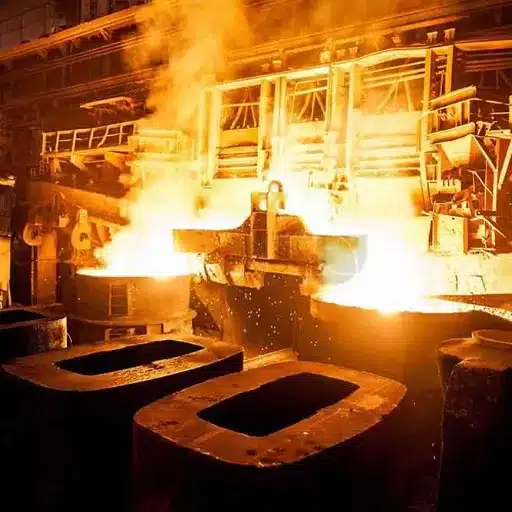
Grade 304 Stainless Steel Specific Melting Point Range
The melting point range of stainless steel grade 304 is in general between 1,400°F (760°C) and 1,450°F (790°C). That range might even slightly differ depending on different factors like the exact composition of the alloy and how the material is processed. Grade 304 is the kind of steel that people really like to use when they want the best and longest-lasting product because it can take the highest heat without melting. Moreover, the steel has a remarkable ability to resist any formation of scales and still retains its strength over the temperature—so it is a very useful material in the industries like construction, automotive, and manufacturing. Knowing the melting point is very important because it helps one to make sure that the 304 stainless steel components working conditions are right for them so that they last longer and perform better.
Factors that Influence the Melting Temperature of 304 Stainless Steel
Chemical Composition
The melting temperature of 304 stainless steel is significantly affected by the precise alloying elements present in it. For example, chromium (18%-20%) and nickel (8%-10.5%) are major players in the melting behavior and heat resistance of the alloy. Changes in the proportions of these elements can lead to slight shifts in the melting range.
Impurities
Even tiny amounts of impurities occurring unintentionally during production can have a say in the melting point. Sulfur and phosphorus, even when present in very small amounts, can bring down the melting temperature of the alloy slightly.
Processing History
The material’s thermal and mechanical treatment history is a factor. The processes like cold working or annealing can change the microstructure and thus it is possible the temperatures at which the material starts undergoing phase change get influenced.
Environmental Conditions
The atmosphere surrounding the stainless steel if it is oxidizing or non-oxidizing, if it has oxygen, nitrogen or reducing gases, that can affect the behavior of the stainless steel at elevated temperatures. An oxidizing environment may cause the formation of scales to occur prior to the material reaching its melting point.
Chemical Composition of 304 Stainless Steel
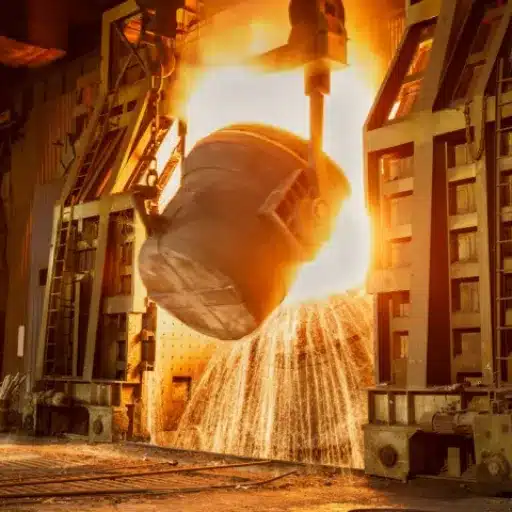
Role of Chromium and Nickel Content
The presence of chromium and nickel is essential in the 304 stainless steel’s furnace charge, playing a major part in its characteristics and performance. Generally, chromium in the range of 18% to 20% is responsible for the so-called ‘passive’ oxide layer on the steel’s surface that increases the steel’s resistance to corrosion. The layer does not allow environmental factors, like moisture and oxygen, to penetrate the steel and start rusting and degrading. The high chromium content is what makes 304 stainless steel suitable for such a wide range of applications, including the most extreme ones where it might be used in the sea or in chemical processing.
Nickel, however, is always present in 304 stainless steel at about 8-10.5%. It is a key player in enhancing the material’s properties of toughness, ductility, and resistance to high and low temperatures. Nickel also promotes the austenitic phase of the steel which keeps 304 stainless steel magnetic-free and very workable even at liquid nitrogen temperatures. Hence, it is widely used in food processing equipment, medical devices, and civil construction.
Influence of Molybdenum in 316 Stainless Steel
Molybdenum addition (around 2-3%) in 316 stainless steel impacts the alloy’s overall cost but significantly boosts its corrosion resistance, especially in the case of more aggressive environments. One of the key benefits that molybdenum brings in is its resistance to pitting and crevice corrosion in chloride-rich places, e.g., marine atmospheres, or operations with chemicals like bromides and iodides.
This remarkable resistance is one of the reasons why 316 stainless steel, besides its high price, is still frequently used in marine, pharmaceutical, food processing, and chemical processing industries applications. For example, molybdenum will be able to keep the steel resisting saline environments without losing its quality, hence outperforming 304 stainless steel in such cases.
Corrosion Resistance and Practical Applications
For applications where resistance to pitting and localized corrosion is critical, I definitely prefer 316 stainless steel. The higher PREN value of this steel compared to that of 304 stainless steel makes it more appropriate for these tough environments, e.g. those involving chlorides or marine conditions.
Common Uses of 304 Stainless Steel in Industry
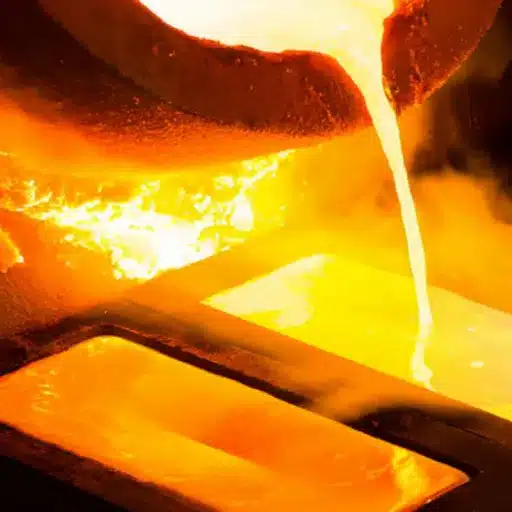
Food and Beverage Industry
The hygienic properties and resistance to acids and chlorine-containing environments make 304 stainless steel ideal for food preparation and processing. It is used mainly for kitchen appliance manufacturing, commercial food processing equipment, brewing tanks, and milk storage containers. Also, to maintain strict sanitary standards, its ease of cleaning is of great importance.
Construction and Architecture
Having a great durability and attractiveness, 304 stainless steel is a top choice for architectural designs including exterior cladding, railings, facades, and roofing. Besides, its ability to withstand severe weather conditions and at the same time retain its aesthetic appeal is an advantage for structural parts of both residential and commercial buildings.
Automotive and Transportation
Trims, exhaust systems, and fuel tanks are some of the components where 304 stainless steel is still the material of choice, because of its great resistance against rusting and high-temperature performance. Marine transportation, in particular, needs this material’s resistance to moisture and chloride environments.
Medical and Healthcare Applications
The biocompatible quality of 304 stainless steel allows its use in medical tools and devices such as surgical instruments, orthopedic implants, needles, and hospital trolleys. The material’s non-reactive attributes not only guarantee patient safety but also a sterile environment.
Performance of 304 vs 316 Stainless Steel
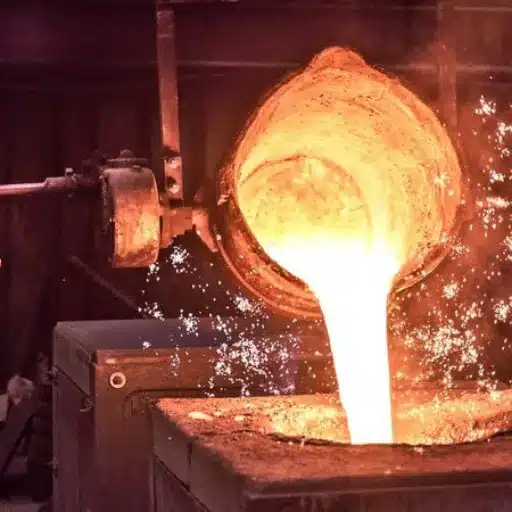
| Comparison Factor | 304 Stainless Steel | 316 Stainless Steel |
|---|---|---|
| Chemical Composition | 18% chromium and 8% nickel | 16% chromium, 10% nickel, and 2-3% molybdenum |
| Corrosion Resistance | Exceptionally resistant to oxidation and general corrosion; suitable for kitchen equipment, construction, and automotive applications | More resistant in harsh conditions; superior resistance to chloride ensures applicability in saltwater, coastal areas, and corrosive chemical industries |
| Temperature Performance | Good for continuous service up to 870°C (1,598°F) | Better performance in extreme heat; retains properties at high temperatures with better creep and tensile strength up to 930°C (1,706°F) |
| Applications | Used for equipment, appliances, or structural applications where corrosion resistance is required but harsh chemicals are not present | Often used in medical instruments, marine parts, or industrial machinery in contact with corrosive substances |
Chemical Composition: Regarding the composition, 304 stainless steel contains 18% chromium and 8% nickel while 316 stainless steel has 16% chromium, 10% nickel, and 2-3% molybdenum. The addition of molybdenum in 316 stainless steel considerably increases its resistance to pitting and crevice corrosion, especially in chloride-rich environments like marine applications or chemical processing.
Corrosion Resistance: 304 is exceptionally resistant to oxidation and general corrosion, thus making it suitable for all most environments including kitchen equipment, construction site, and automotive applications. However, 316 is still more resistant than 304 corrosion in harsh conditions. Its superior resistance to chloride ensures its applicability in saltwater, coastal areas, and industries dealing with corrosive chemicals for a longer period.
Temperature Performance: Both stainless steels perform well at elevated temperatures, but 316 demonstrates better performance in extreme heat. While 304 is good for continuous service up to 870°C (1,598°F), 316 retains its properties at high temperatures and thus offers better creep and tensile strength at up to 930°C (1,706°F).
Applications: Stainless steel 304 is used in a variety of applications for equipment, appliances, or structural where corrosion resistance is a must but harsh chemicals would not be present. Contrarily, stainless steel 316 is often used in medical instruments, marine parts, or industrial machinery that are in contact with corrosive substances.
Real-World Implications and Future Trends
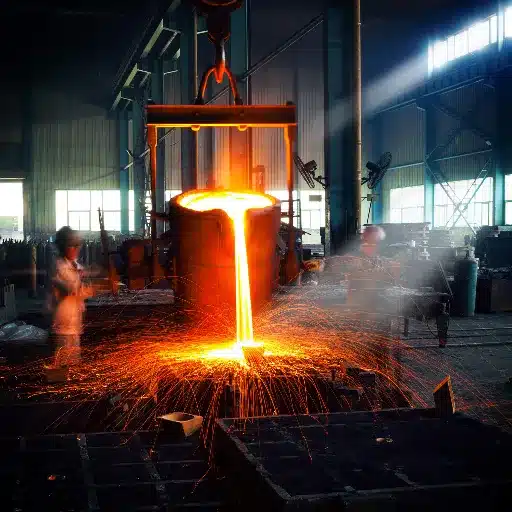
Impact of Melting Point on Manufacturing Processes
The melting point of stainless steel is one of the most important factors that influences the decision-making process regarding its use in different manufacturing methods. The melting points of stainless steels generally lie within a range of 2,500°F (1,371°C) to 2,800°F (1,538°C), an interval that varies according to the specific alloy. For instance, the melting range of grade 304 stainless steel is approximately 2,550°F to 2,650°F (1,399°C to 1,454°C), while the melting point of grade 316 is slightly lower due to the presence of molybdenum.
The high melting points make it possible for the material to endure the most rigorous thermal and mechanical stresses associated with the manufacturing of these processes like casting, welding, and forging. So this feature is of great importance in sectors like aerospace and automotive, where the parts are required to withstand tough environmental conditions. For example, to meet the requirements of modern jet turbines, stainless steel kinds are developed that are capable of sustaining structural integrity even at the highest temperatures, thereby improving efficiency and performance.
Trends in Metallurgy Related to Stainless Steel 304
The widely-used grade Stainless Steel 304 is still at the forefront of metallurgical and manufacturing industries thanks to its superior corrosion resistance, excellent strength, and high versatility. New trends in metallurgy have pointed out the concern about the sustainability and performance of Stainless Steel 304, which will be solved through advanced technologies and innovative processes.
One of the major trends is the usage of Artificial Intelligence (AI) and Machine Learning (ML) in alloy production. These the. exhaustor technologies enable manufacturers to analyze and control the process better, thus benefiting the material quality and performance prediction under different conditions. For instance, the predicted modeling has led to a 20% reduction in raw material losses during the smelting and forging processes, according to a 2022 research report.
Reference Sources
-
AZoM – Stainless Steel – Grade 304 (UNS S30400)
This article provides detailed information about the properties of stainless steel 304, including its melting point range (2550°F – 2650°F or 1399°C – 1454°C).
Source Link -
Marlin Wire – What is the Melting Point of Stainless Steel?
This blog post lists the melting points of various stainless steel grades, including 304, and explains their industrial applications.
Source Link -
GlobalSpec – Thickness and Melting Point of AISI 304 Stainless Steel
A discussion thread on GlobalSpec that confirms the melting temperature of stainless steel 304 remains consistent regardless of thickness.
Source Link
Frequently Asked Questions (FAQs)
What are the mechanical properties of 304 stainless steel?
304 stainless steel has very good mechanical properties like tensile strength, elongation, and hardness. Yield strength is around 215 MPa and ultimate tensile strength is roughly 505 MPa. The material’s high resistance to corrosion is another great property which makes it a perfect material for various applications where longevity is required.
Is 304 stainless steel corrosion-resistant?
The 304 stainless steel grade is well-known for its excellent corrosion resistance under the majority of oxidizing acids. The addition of nickel and chromium in the composition of the alloy strengthens its rust and corrosion resistance. As a result, it is widely used in kitchen appliances, food processing equipment, and building materials.
What are the main differences between austenitic and ferritic stainless steels?
Austenitic stainless steels, such as 304, are non-magnetic and can be made harder by cold-working. Whereas ferritic stainless steels are magnetic and cannot be hardened in this way. The different microstructure and composition, especially the carbon and alloying elements’ amount, give them distinct mechanical and corrosion-resistant properties.
What is the role of carbon in stainless steel?
Carbon in stainless steel helps to define its strength and ductility levels. In grade 304, the carbon content is reduced to a very low level (usually less than 0.08%) to improve corrosion resistance and keep good weldability. Carbon content in other grades like martensitic is higher, which leads to increased hardness, but this might also make the steel less resistant to corrosion.

